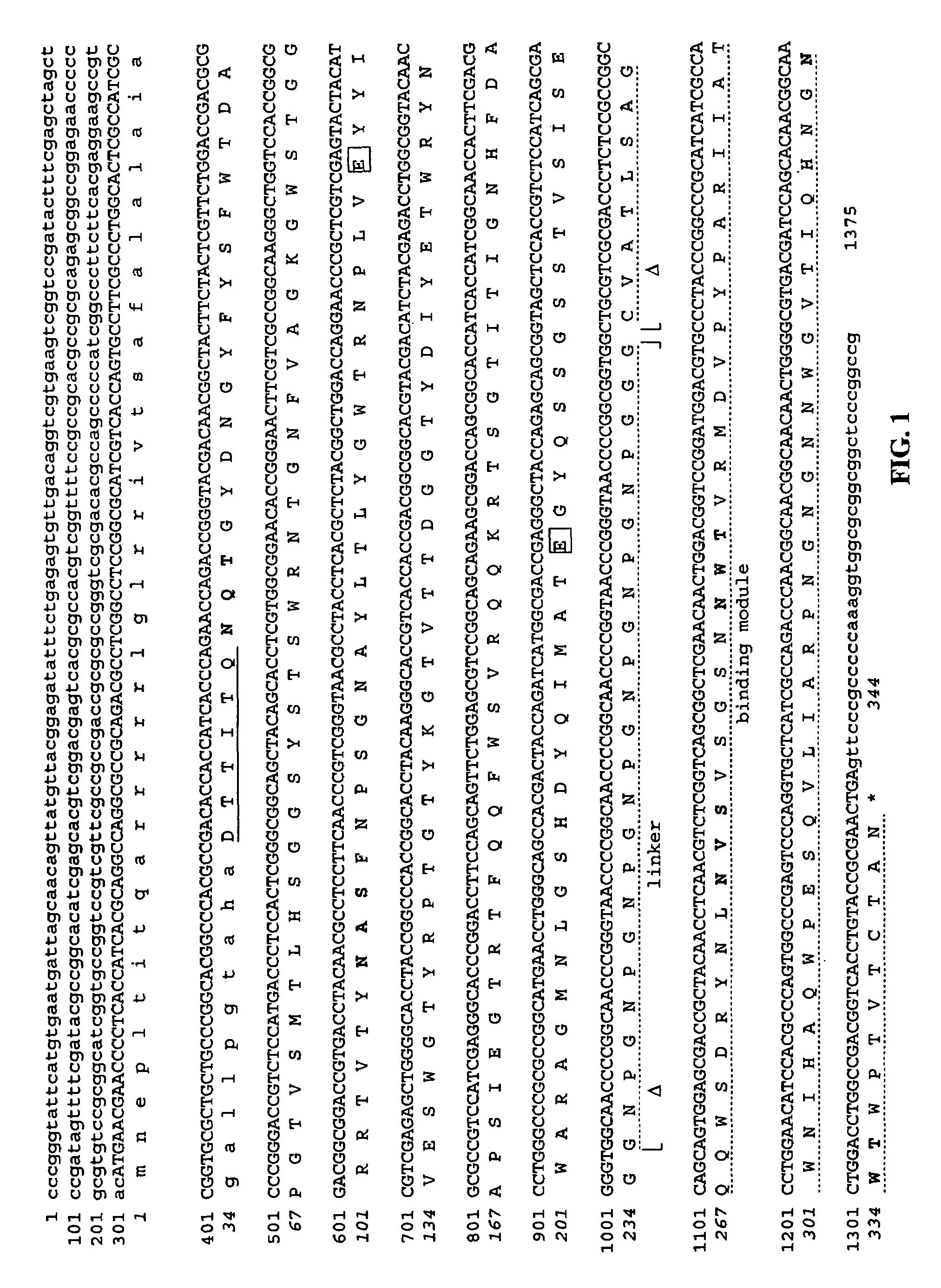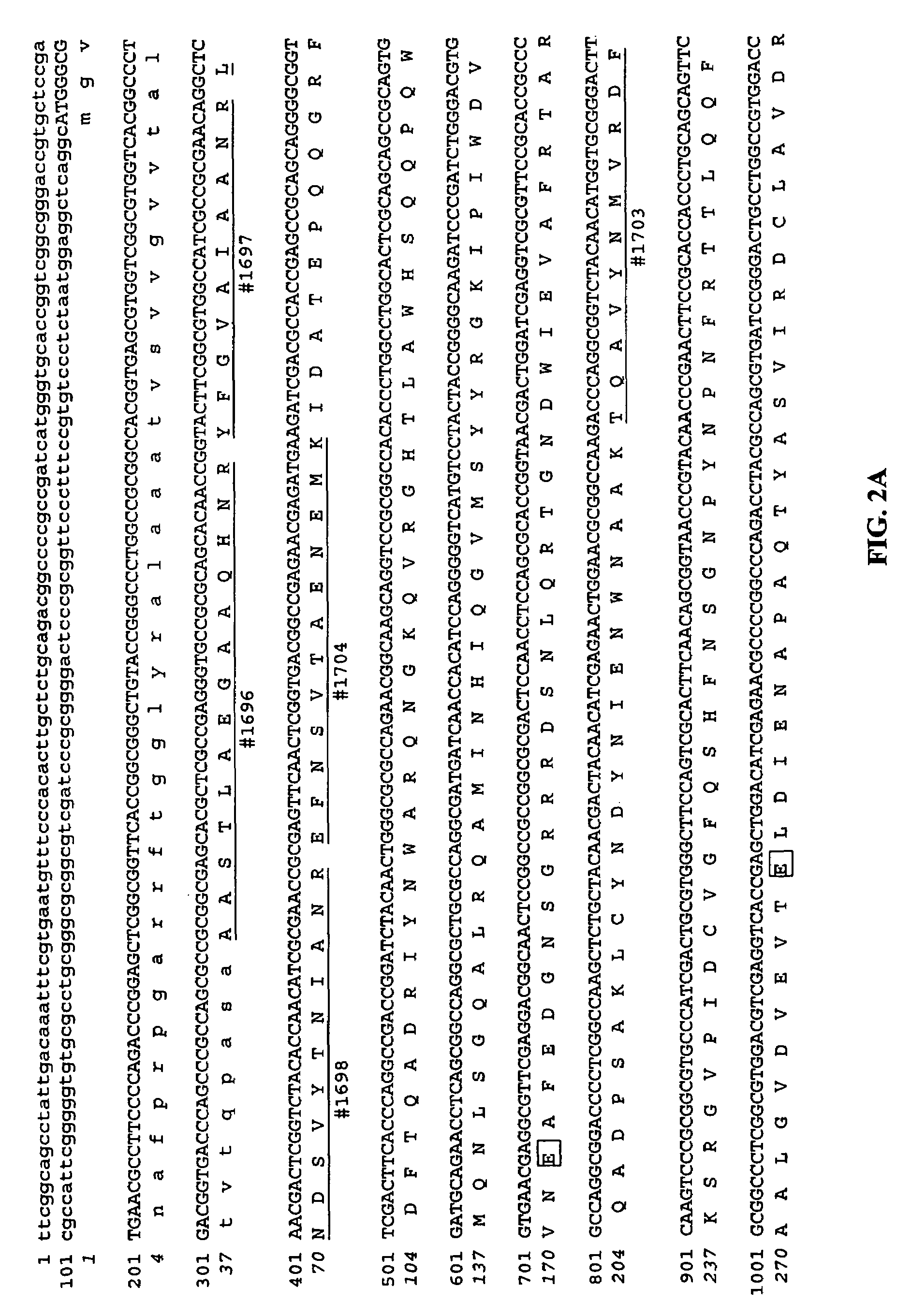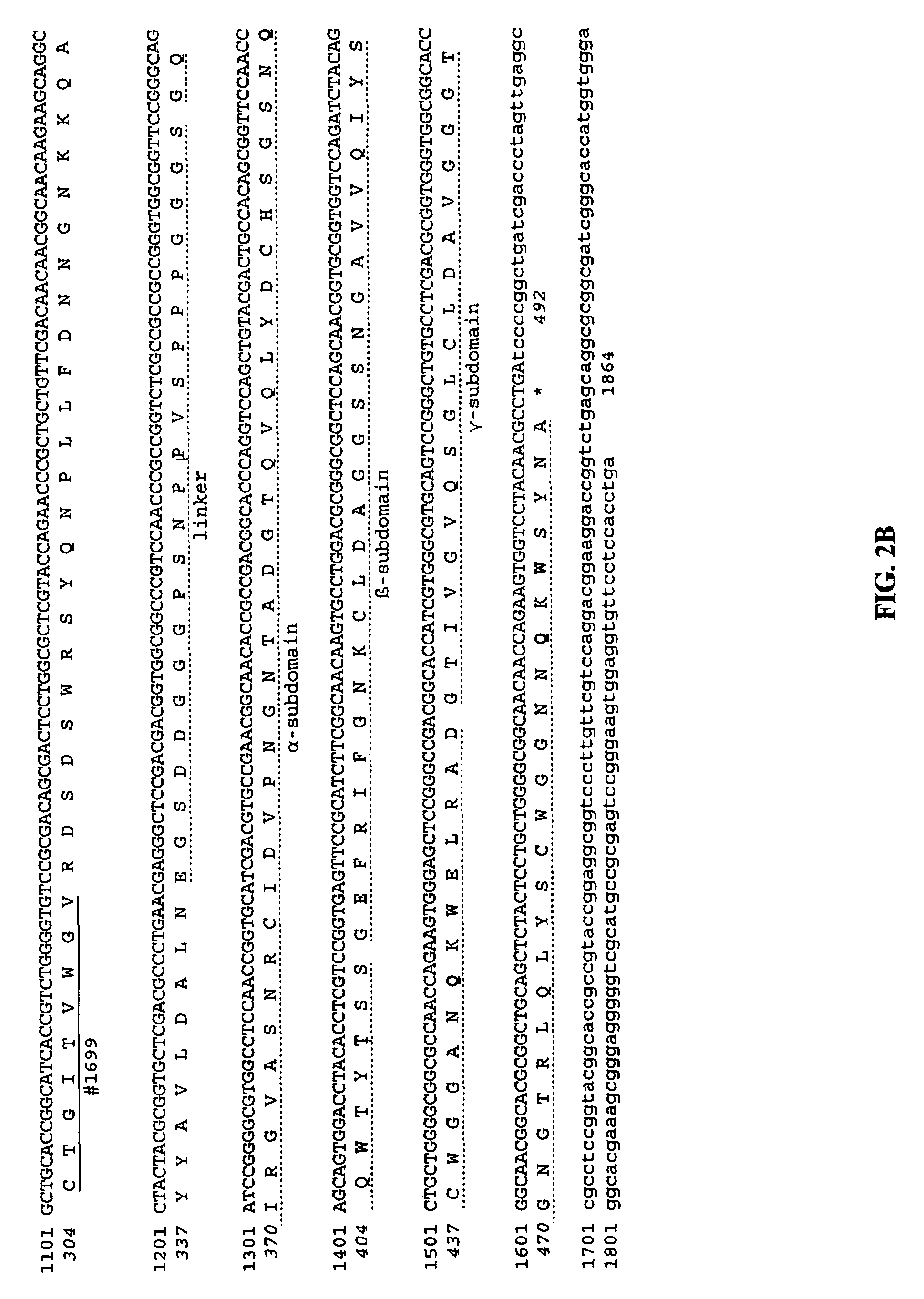Method and DNA constructs for increasing the production level of carbohydrate degrading enzymes in filamentous fungi
a technology production level, which is applied in the field of molecular biology, can solve the problems of low production level and unsuitability for industrial production, and achieve the effect of improving the production level of carbohydrate degrading enzymes
- Summary
- Abstract
- Description
- Claims
- Application Information
AI Technical Summary
Benefits of technology
Problems solved by technology
Method used
Image
Examples
example 1
Methods Used in the Analysis and Characterisation of Proteins (Polypeptides) Protein and Enzyme Assays
[0091]Protein concentrations in the culture media and purified enzyme samples were assayed after TCA precipitation by the method of Lowry, et al. (J. Biol. Chem., 193, 265-275, 1951) using bovine serum albumin as a standard protein. During enzyme purifications, proteins were monitored at 280 nm. Xylanase activity was assayed by using 1% (w / v) birch xylan (Roth no. 7500, Roth, Karlsruhe, Germany) as a substrate in 50 mM McIlvaine citrate-phosphate buffer according to the method of Bailey et al., (J. Biotechnol., 23, 257-270, 1992). During enzyme purification and determination of the specific activity of the pure proteins the assay was performed at pH 7, 60° C. for 5 min, otherwise as stated in the figure legends. For characterization of the purified Xyn11A polypeptides the buffer was supplemented with 0.1% BSA, except for the determination of thermostability which was performed witho...
example 2
DNA Techniques Used in Constructing Plasmids and Strains
[0095]Standard DNA methods (Sambrook, et al., Molecular cloning: a laboratory manual, 2nd ed. Cold Spring Harbor Laboratory, Cold Spring Harbor, 1989) were used in constructing plasmids, transforming E. coli and performing Southern blots. Each enzyme and kit was used according to the instructions from the supplier. The enzymes for DNA modifications were purchased from Roche Diagnostics GmbH (Mannheim, Germany), New England Biolabs (Beverly, Mass.) and Finnzymes (Espoo, Finland). Qiagen columns (Qiagen GmbH, Hilden, Germany) or Magic Miniprep kits (Promega, Madison, Wis.) were used in the plasmid isolations. The oligonucleotides were either synthesized using ABI 381A DNA synthesizer or ordered from Sigma-Genosys. The sequencing reactions were analysed either by using ABI 373A or ABI Prism™ 310 Genetic Analyzer (Applied Biosystems, Foster City, Calif.). Polymerase chain reactions (PCR) were performed using PTC-100 Programmable Th...
example 3
Microbial Strains Used as Hosts and in Constructing Plasmids, Growth Media and Growth Conditions
[0097]Plasmids were propagated in Escherichia coli XL1-Blue or XL10-Gold (Stratagene, La Jolla, Calif.). The vector backbones used in the plasmid constructions were pUC18 (EMBL Database Accession No L09136), pUC19 (L09137), pBluescript SK− and pBluescript II KS+ or KS− (Stratagene). All E. coli cultivations were performed over night at 37° C. in Luria-Bertani medium into which ampicillin had been added (50 μg / ml).
[0098]The Trichoderma reesei strains ALKO3620 and ALKO4468 were used as parents for the transformations. T. reesei ALKO3620 is an endoglucanase II-negative strain. It was constructed from the low protease mutant strain ALKO2221, derived from the strain VTT-D-79125 (3) by UV-mutagenesis (Bailey and Nevalainen, Enzyme Microb. Technol., 3, 153-157, 1981) as follows. The endoglucanase 2 gene (cel5A or egl2, originally named as egl3; (Saloheimo, et al., Gene 63, 11-21, 1988)) was repl...
PUM
| Property | Measurement | Unit |
|---|---|---|
| molecular weight | aaaaa | aaaaa |
| molecular weight | aaaaa | aaaaa |
| molecular weight | aaaaa | aaaaa |
Abstract
Description
Claims
Application Information
 Login to View More
Login to View More - R&D
- Intellectual Property
- Life Sciences
- Materials
- Tech Scout
- Unparalleled Data Quality
- Higher Quality Content
- 60% Fewer Hallucinations
Browse by: Latest US Patents, China's latest patents, Technical Efficacy Thesaurus, Application Domain, Technology Topic, Popular Technical Reports.
© 2025 PatSnap. All rights reserved.Legal|Privacy policy|Modern Slavery Act Transparency Statement|Sitemap|About US| Contact US: help@patsnap.com



